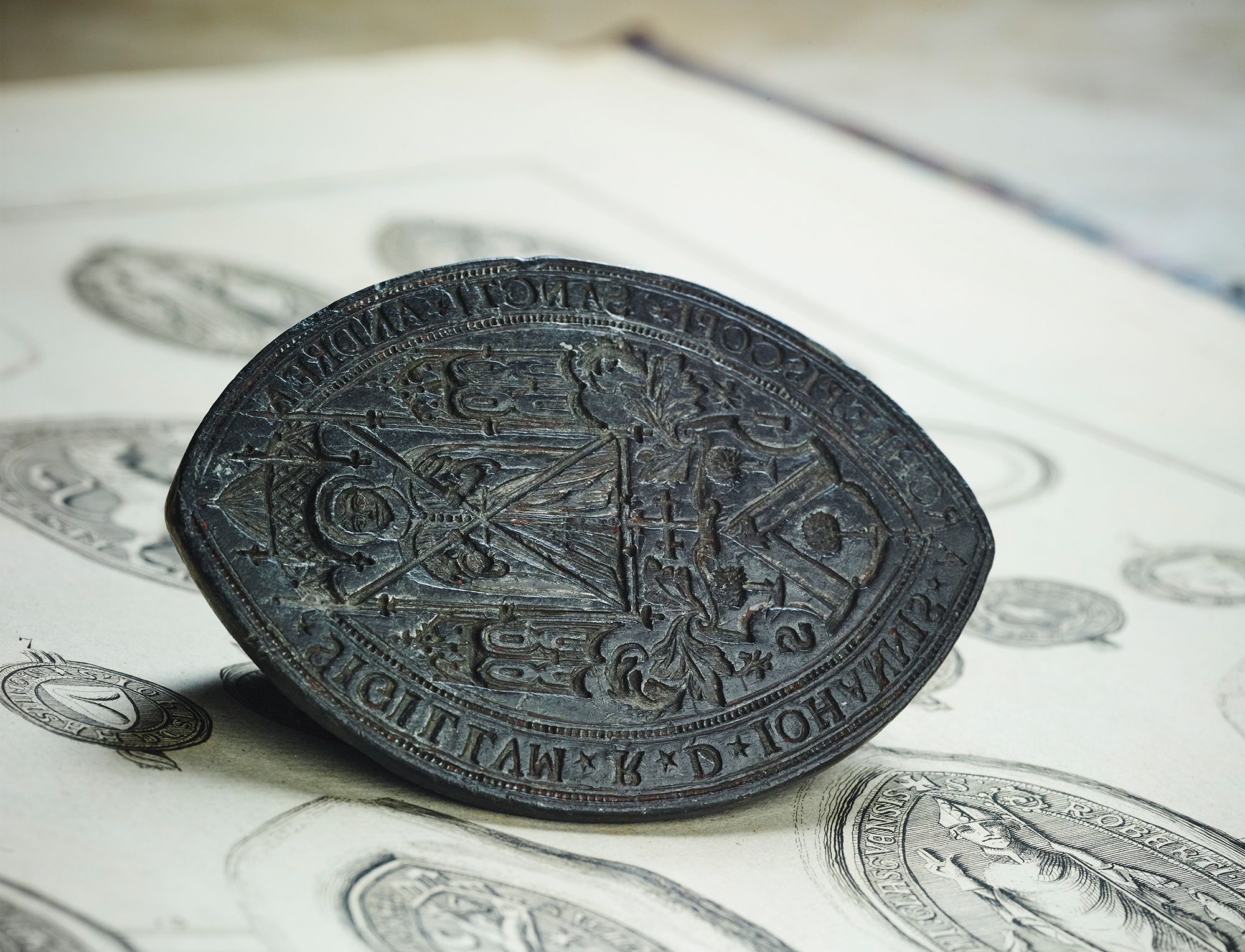Collected for their historical interest as well as their beauty, the Matrix Collection has been carefully compiled by the late Mr David Morris. Showcasing a variety of personal desk seals as well as institutional and organisational desk seals, we are pleased to offer select pieces from the collection to auction in May 2023.

A Private Collection of Seals: Highlights from The Matrix Collection
10 May 2023
Lyon & Turnbull
The Matrix Collection has been carefully compiled by the late Mr. David Morris. An avid collector in the traditional sense, his passion continued throughout his life resulting in the formation of a significant collection. Morris always showed a keen interest in Scotland, exemplified by the 1984 sale at Christie’s of the first section of his collection of Scottish Provincial silver, still to this day the most significant collection of Scottish silver ever sold. The collection contained many great rarities which were secured by institutional buyers and the largest collectors of the day, few of which have retuned to the market since.

His thirst for knowledge within his collecting fields can be also be seen within his library on silver and related crafts, considered one of the finest amassed, which was offered by Woolley & Wallis in 1995.
David’s attention to detail and interest in historic hand seals was fuelled by the desire to create more accessible material on the subject, “the wealth of interesting pieces in the reserve collections of our leading museums seldom sees the light of day.” He collected the seals for their historical interest as well as their beauty, showcased in his important publication Matrix: A Collection of British Seals.

The Matrix Collection focuses on Great Britain and its international links. Looking at the domestic history but also how Great Britain influenced the rest of the world, on the Continent and further afield. The seals have the ability to show us key moments in history whether this be highlighting the important individuals who used them to correspond and officiate key moments or the foundation of noteworthy organisations. The seals go far beyond their function, they offer an insight into the political and social context of their day as well as reflecting the fashions of the owner.

Pre-dating writing, seals were used the same way as signatures are today. They authenticated documents such as charters, letters, writs and are also used to seal documents for correspondence. Consequently, they begin to reflect the owner’s personality, whether that be functional or flamboyant.
The rise in seals with handles, regularly called desk seals, occurred in the 16th and 17th centuries with the rise in the notion of a desk as a fixed piece of furniture. As silver came to the forefront at the same time, the material which lent itself to the engraving of heraldry became a favoured choice for matrix’s and mounts. Designated for the wealthier echelons of society, this addition of precious metal and stones rose alongside the popularity of the Grand Tour.

As the wealthy travelled through Europe absorbing Classical art and antiquity they acquired rare, beautiful and exotic hardstones, a turning point leading to the seals themselves truly becoming works of art. By the 19th century seals certainly became objet de vertu.
Their appeal is widespread, from personal use to that by societies and business they transcend all facets of society. The interest found by Morris in these stories was a driving factor in his collecting. The beauty, care and, no doubt, cost in creating these pieces for newly formed businesses or societies shows the importance of an armorial, insignia, and seal. Those created when an elevation or change in society by marriage or inheritance necessitated a new armorial and seal were particularly important, being some of the finest and most elaborate to survive.

Although, there is not much known about those who made them, it is generally accepted that a ‘toyman’ would have been the first point of contact for purchasing. ‘Toyshops’ in the Georgian period sold desirable luxury items, including, etuis, jewellery, watches, travelling cases, snuff boxes and much more, in gold, silver or even pinchbeck. Many hands worked on the seals with the handles from one workshop, and the engraving and matrices from another.

These portable works of art offer a glimpse into a time when armorial and insignia had far more immediate meaning, they show us art in miniature and craftsmanship at its best. Perhaps most tantalising is that each piece tells us a different story, taking us to a different time and place.
All sold prices include buyer's premium.

